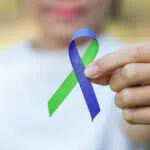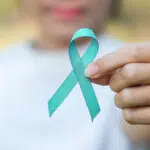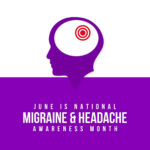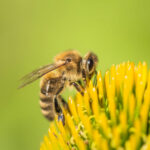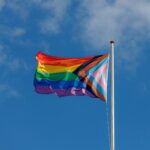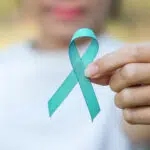World Narcissistic Abuse Awareness Day is a global event that takes place annually on June 1, intending to raise awareness about the effects and signs of narcissistic abuse. Often, the patterns and impacts of narcissistic abuse are not as clear-cut due to its intangible nature and lack of research. Thus, the day is dedicated to providing education, support, and resources for survivors to build a greater understanding of how to help victims avoid abusers in the future and rebuild their mental health.
History of World Narcissistic Abuse Awareness Day
World Narcissistic Abuse Awareness Day was initiated in 2016 by psychotherapist Bree Bonchay as a campaign to highlight and educate the public on the effects of narcissistic abuse and how signs can be spotted.
The indicators of a mentally abusive relationship are not always clear. While physical abuse leaves tell-tale marks such as bruises, cuts, and scars, emotional abuse is difficult to pinpoint due to its mainly verbal and mental nature. However, it can have a larger, longer impact on the victim that can affect them through the rest of their lives.
The word ‘narcissist’ itself is commonly used to describe anyone full of themselves, but its meaning goes deeper than that. Narcissism itself is a destructive, damaging pattern of behavior that can leave severe mental impacts on others. Victims of narcissistic abuse may have experienced things such as gaslighting, isolation, and neglect, and may be insulted regularly by a partner, friend, family member, or even strangers. Sometimes, more impressionable victims might not realize the abuse is happening as they might internalize this confusion, causing further mental damage and increasing their self-deprecation.
Sometimes, abusers do so because they suffer from actual personality disorders, namely Narcissistic Personality Disorder (N.P.D.), Antisocial Personality Disorder (A.S.P.D.), and many others, but they don’t necessarily have to be. They may exhibit signs of antisocial behavior, an inability to show sympathy or empathy to others, and an incredibly self-important nature that makes them actively restrict self-reflection, treatment, and change. The causes of developing these traits can range from cultural factors to the state of upbringing. Unfortunately, the effects of narcissistic abuse are relatively understudied, and statistics can be hard to come by.
This makes putting an end to narcissistic abuse a challenge, but it is still possible to do so by raising awareness and educating people on what constitutes such abuse, how to identify abusers, and what can be done to help the victims and survivors.
World Narcissistic Abuse Awareness Day timeline
The Roman poet Ovid records the story of Narcissus, the selfish, handsome hunter whose self-aggrandizing personality forms the basis of the current meaning of the term ‘narcissist.’
The first case study on a narcissistic personality is published by Austrian psychoanalyst Robert Waelder.
Austrian-American psychologist Heinz Kohut first coins the term ‘narcissistic personality disorder.’
World Narcissistic Abuse Day is first held.
World Narcissistic Abuse Awareness Day FAQs
What happens during narcissistic abuse?
The effects of narcissistic abuse span a variety of mental issues such as heightened anxiety, loss of self-worth, depression, cognitive problems such as memory loss or difficulty focusing, trust issues, self-harm, and even the development of post-traumatic stress disorder. These problems can severely damage the victim in the long run and might also affect those around them.
What are the main behavioral traits of narcissistic abusers?
Typical signs of narcissistic abuse include the overexertion of dominance, manipulation, intimidation, emotional coercion, humiliation, pathological lying, extreme jealousy, excessive guilt-tripping, gaslighting, financial abuse, isolating the victim, lacking empathy for others, having unrealistic expectations, and an extreme sense of self-entitlement.
Are there laws that help prohibit narcissistic abuse?
While there aren’t any specific laws forbidding emotional abuse, it is a legal course of action in courts and is a valid basis for litigation.
How to Observe World Narcissistic Abuse Awareness Day
Learn more about narcissistic abuse
You can learn more about the symptoms and effects of narcissistic abuse by searching for studies and similar reading material online. The World Narcissistic Abuse Day website, for example, offers easy-to-understand insights on the matter.
Spread the word, show you care
Post on your social media pages regarding World Narcissistic Abuse Day or information on narcissistic abuse by using the campaign's official hashtag #IfMyWoundsWereVisible. You can also add the W.N.A.A.D. ribbon to your social media profile pictures to show your solidarity.
Be there for those who need it
If you know someone who is exhibiting tell-tale signs of emotional abuse, it helps to be there for them to help them get through the situation. Listen to what they have to say, and direct them to the help they need. A little bit of empathy will go a long way.
5 Concerning Facts About Narcissism
The scope of abuse
World Narcissistic Abuse Day founder Bree Bonchay states that up to 158 million people in the United States are currently affected by narcissistic abuse.
The general statistic
The Diagnostic Statistical Manual of Mental Disorders (D.S.M.-5) says that the prevalence of the general population suffering from an antisocial personality disorder is estimated to be at least 3.3%.
A study of the brain
Neurological studies show that narcissists' brains tend to exhibit signs of abnormality in their insular cortex, which is the region of the brain known to generate empathy.
The official name for a beloved flower
'Narcissus poeticus' is the scientific namesake of the daffodil.
Narcissists in pop culture
According to experts, the most accurate depictions of narcissistic personalities in pop culture include the Lannister family from “Game of Thrones,” Jay Gatsby from “The Great Gatsby,” and Amy Dunne from “Gone Girl.”
Why World Narcissistic Abuse Awareness Day is Important
It raises awareness
World Narcissistic Abuse Day shines the light on an issue that is rampant yet difficult to see. It helps us understand why the abuse takes place, how to minimize its effects, and makes us more aware of the importance of mental health.
It shows victims they’re not alone
The day lets us display our solidarity towards those who have been victims of all types of mental abuse. It shows them that they are not alone in fighting this, and that help is always within an arm's reach.
It can help spur research
Because studies on the effects of narcissistic abuse are not as plentiful as they should be, World Narcissistic Abuse Day can help inspire further research on the matter. While the internet is littered with tales from sufferers and survivors, more scientific research on the effects of narcissistic abuse can build further understanding of the long-term effects and can help develop and improve treatments.
World Narcissistic Abuse Awareness Day dates
| Year | Date | Day |
|---|---|---|
| 2026 | June 1 | Monday |
| 2027 | June 1 | Tuesday |
| 2028 | June 1 | Thursday |
| 2029 | June 1 | Friday |
| 2030 | June 1 | Saturday |






















































